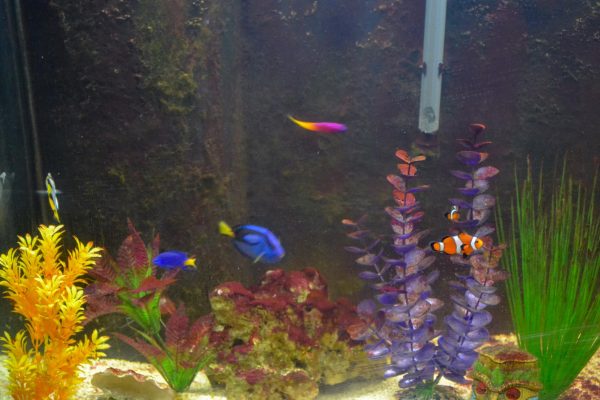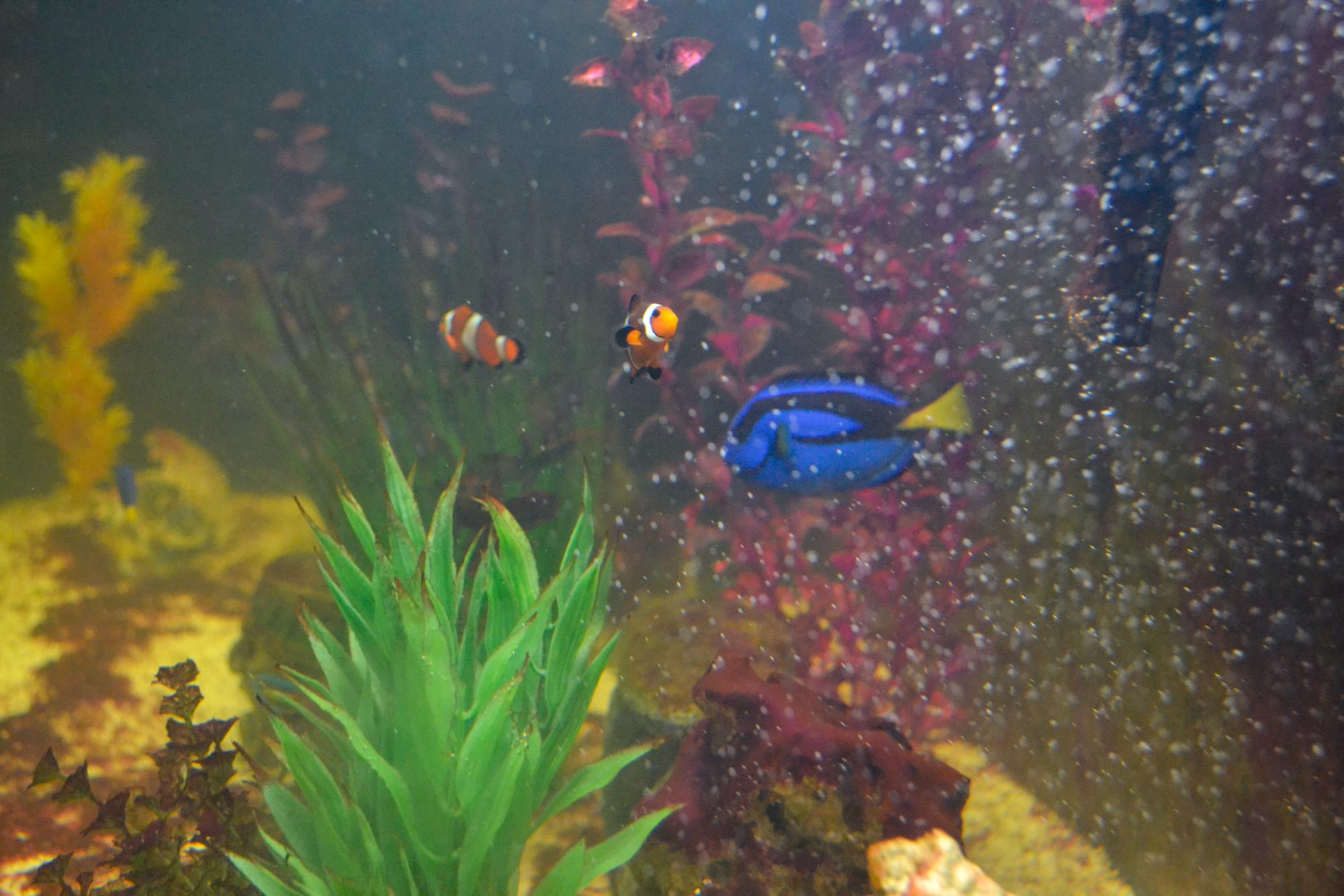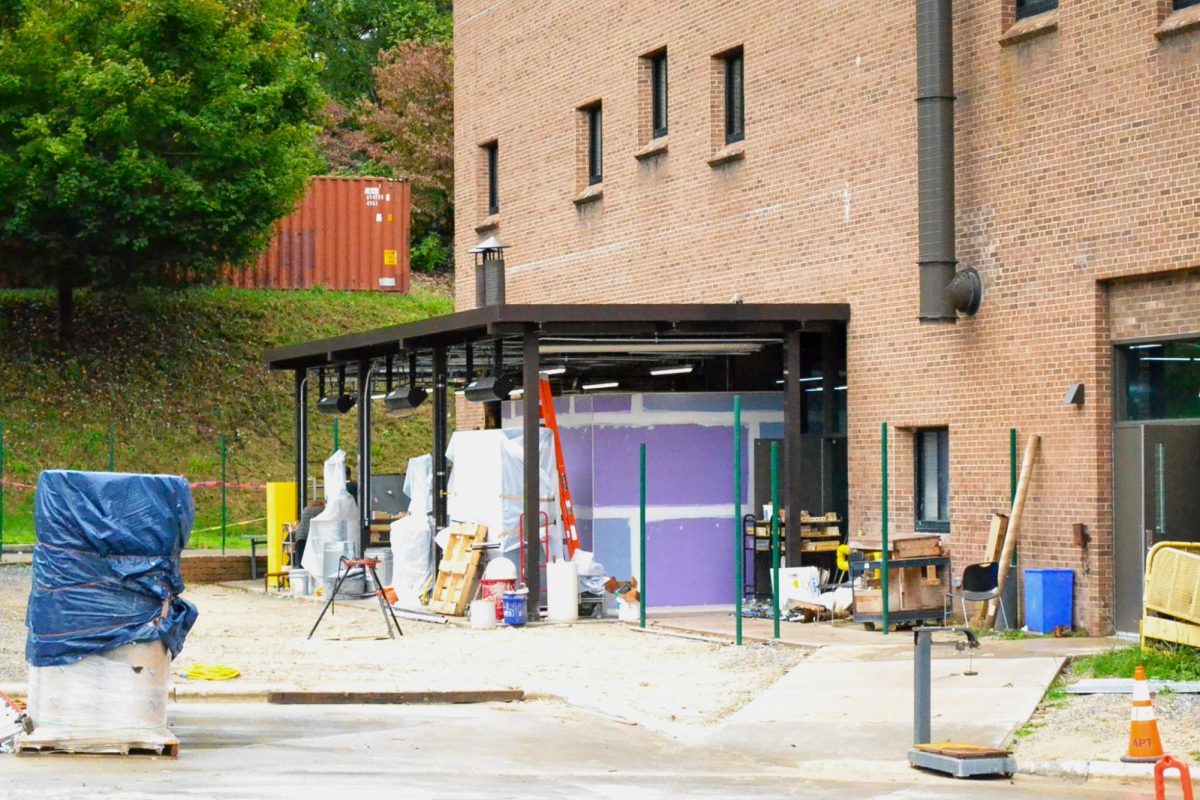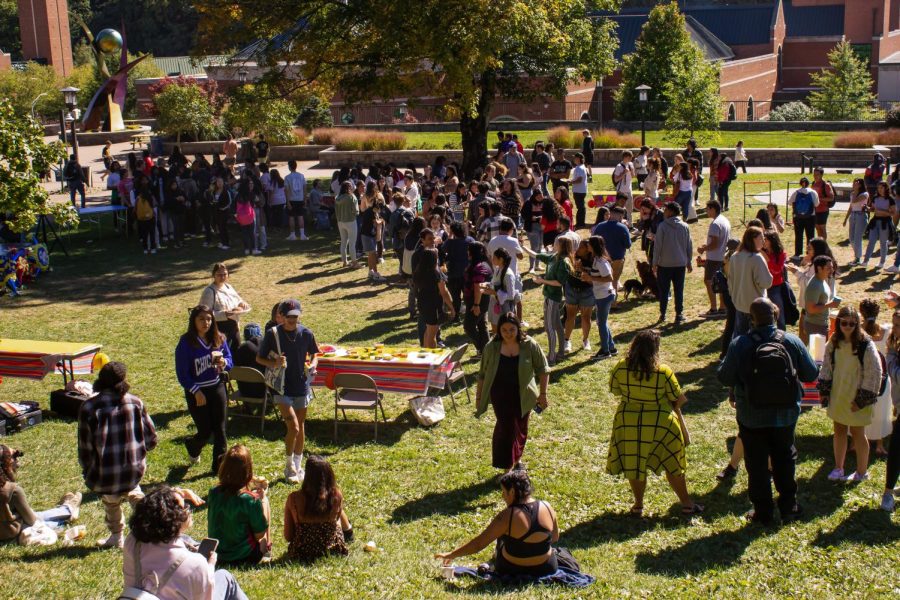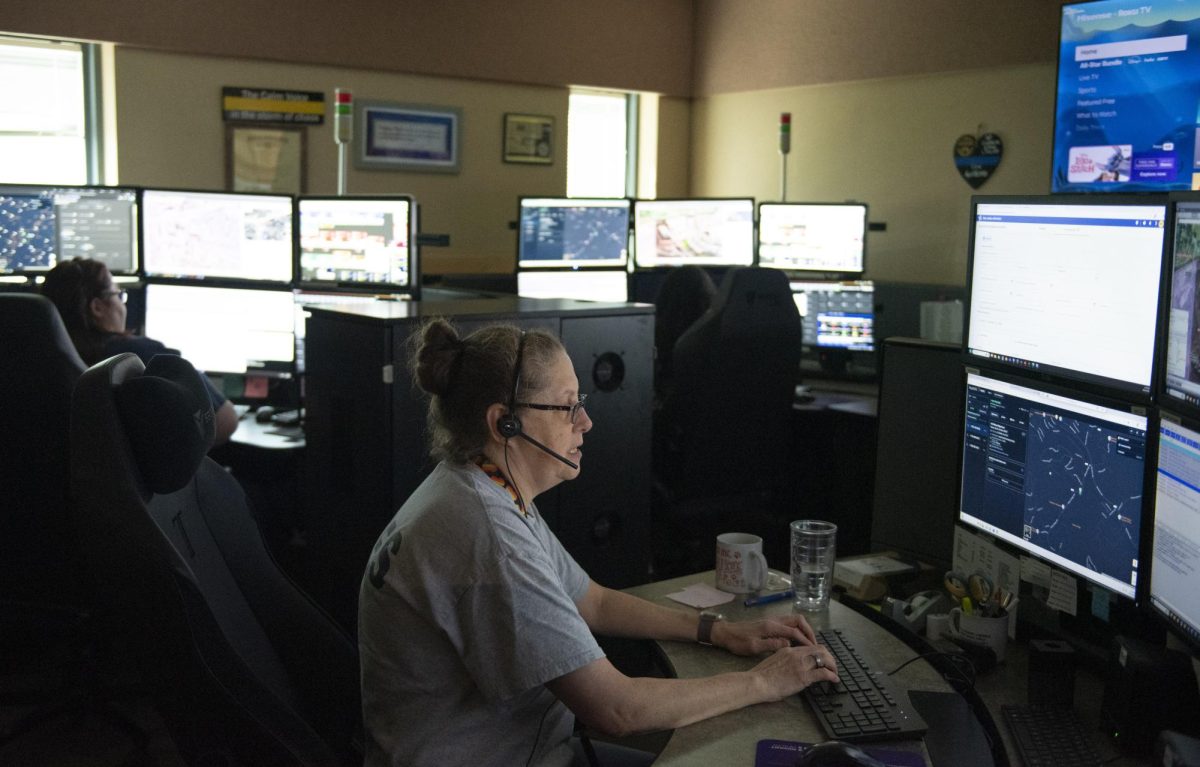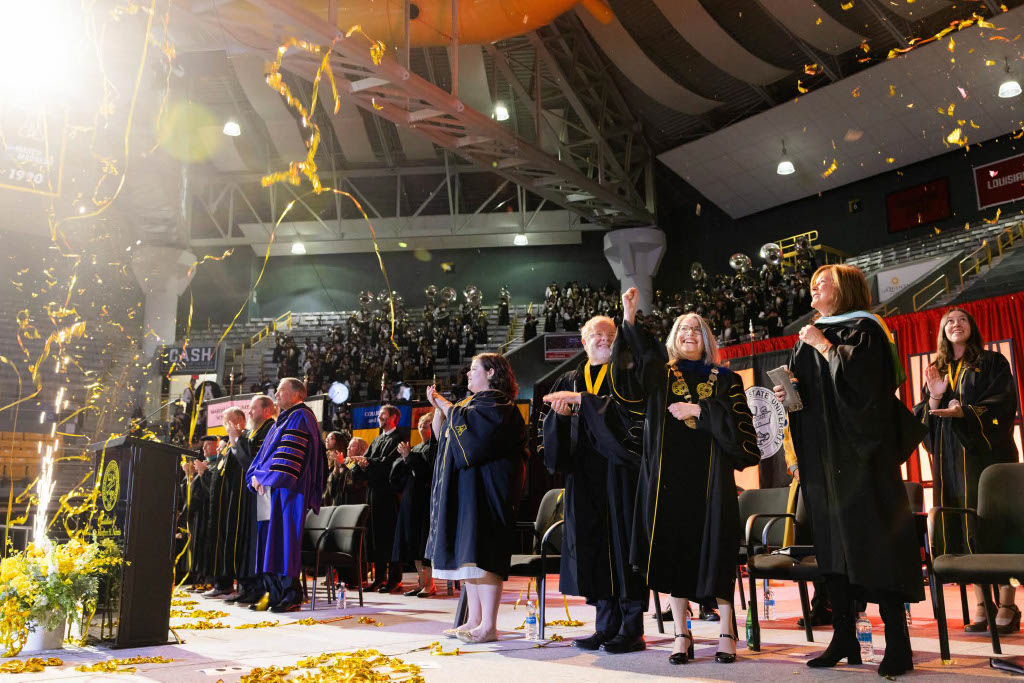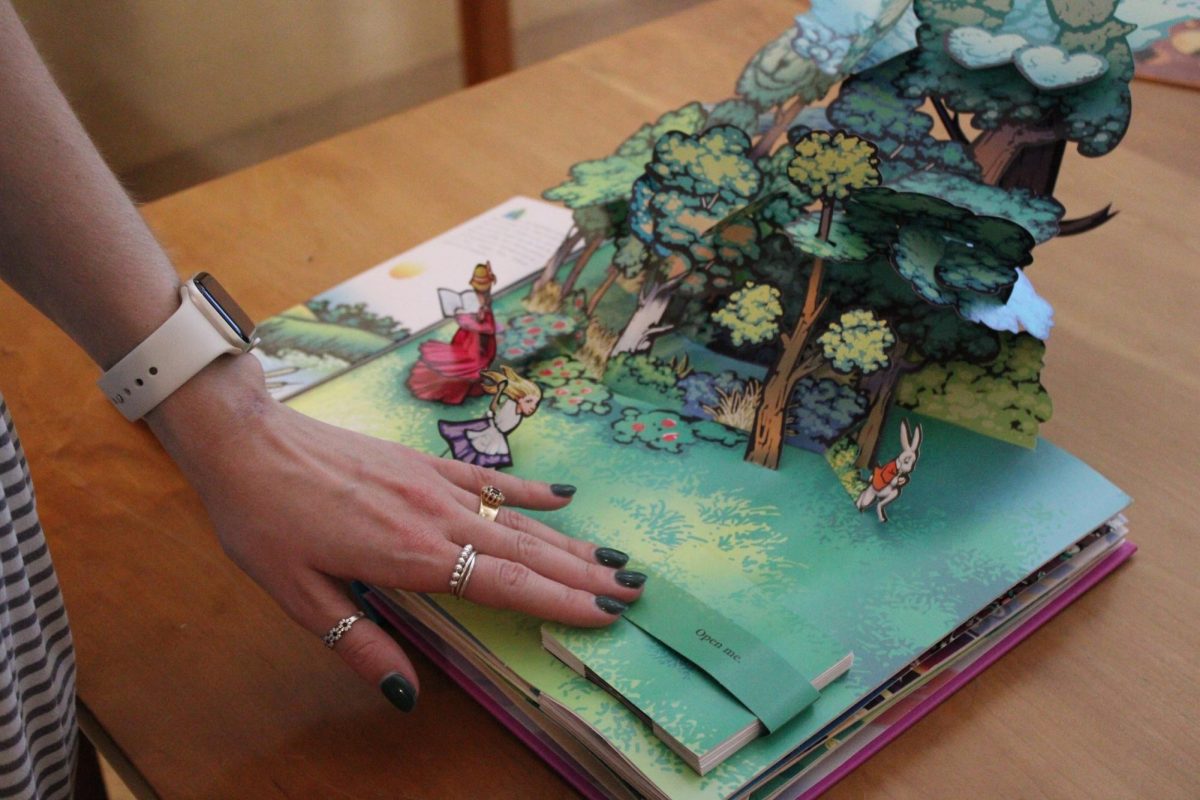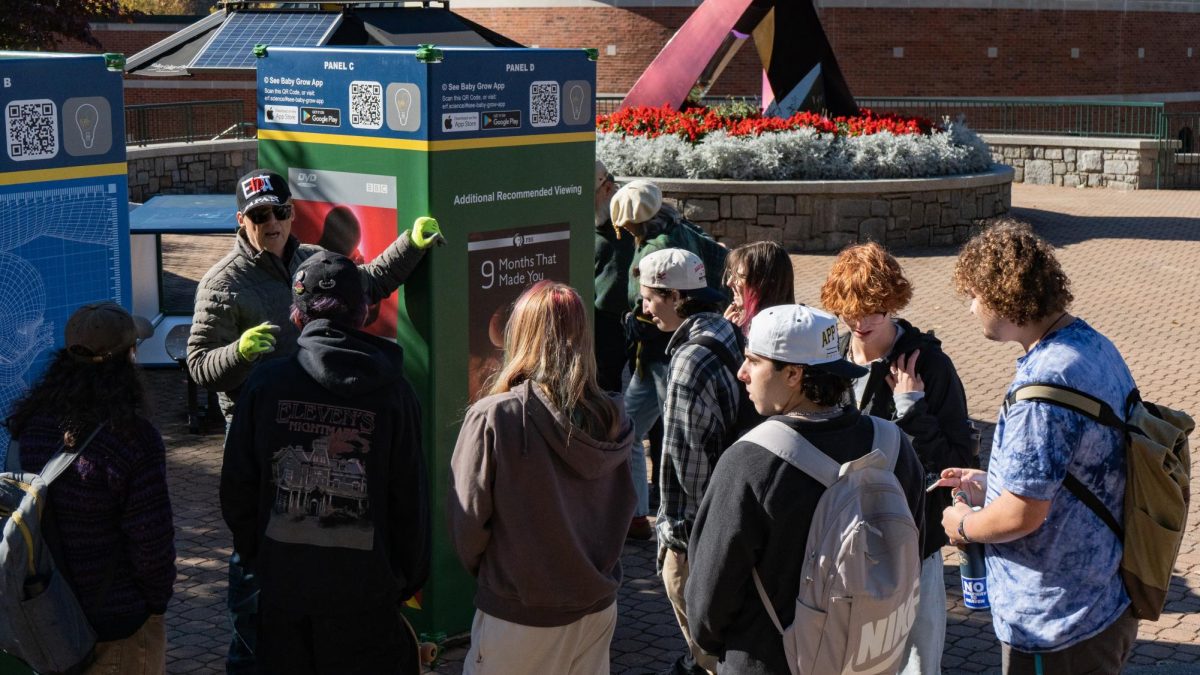If one walks around App State on a sunny day, often various dogs, or maybe even a cat, can be found around campus. These pets are a staple of Sanford Mall and therapy offices, and they can provide a refreshing break from the stress of schoolwork.
What most people don’t look for, however, are the animals behind glass walls with fins, scales and exoskeletons instead of whiskers and fur.
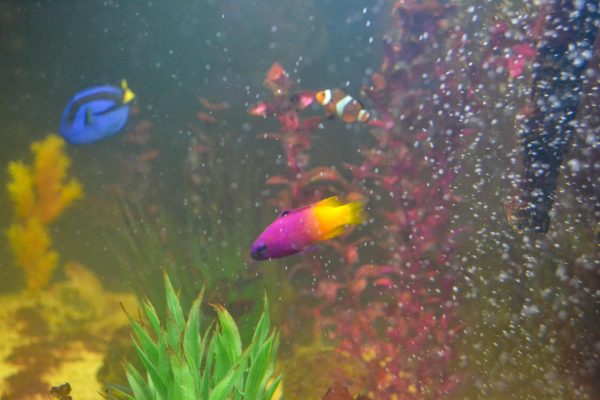
These fish are taken care of by Noah Derucher, a junior political science major and self-proclaimed fish enthusiast.
“I’ve always wanted a fish tank,” Derucher said. “Instead of taking care of a small tank myself in my apartment, I set up a large saltwater tank here.” Derucher said he took over the position as fish caretaker in February, when the tank was a freshwater enclosure in rough condition. “Running a saltwater tank has been easier than trying to save that freshwater tank. It was easier to start over,” Derucher said. The old fish found new homes during this process, and the new fish were paid for in part by the university.
App State also pays for the equipment, sand and rocks, while Derucher bought the decorations.
“It’s not as easy as it looks,” Derucher said. “It’s a process and a patience game.”
The fish’s care routine involves being fed three times a day, having a dose of vitamins and phytoplanktons given to them three times a week and weekly tank cleanings. The upkeep is continuous, and Derucher takes care of the fish alongside his class schedule.
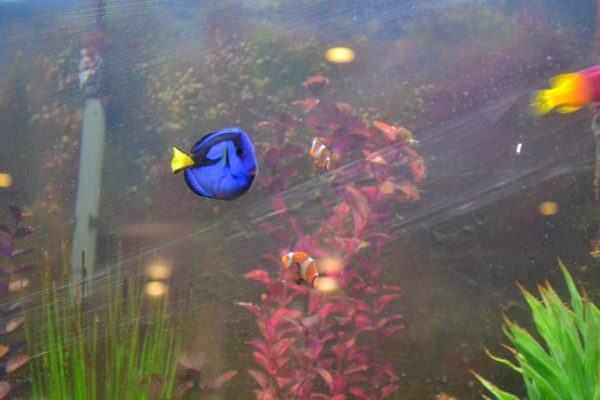
Within Rankin Hall live Rosie and Violet, two snakes that have years of history at App State.
Scott Rhyne, the vivarium research director, is the caretaker of the snakes and started his career at a veterinary hospital. He’s been looking after the two snakes since his undergraduate years and handles them when needed.
Unlike Derucher’s fish, these animals are strictly considered learning materials to be used in a zoology lab once a semester, Rhyne said. They get taken out of their enclosure to be studied and observed by students in a showcase of various other animals that one would otherwise not interact with.
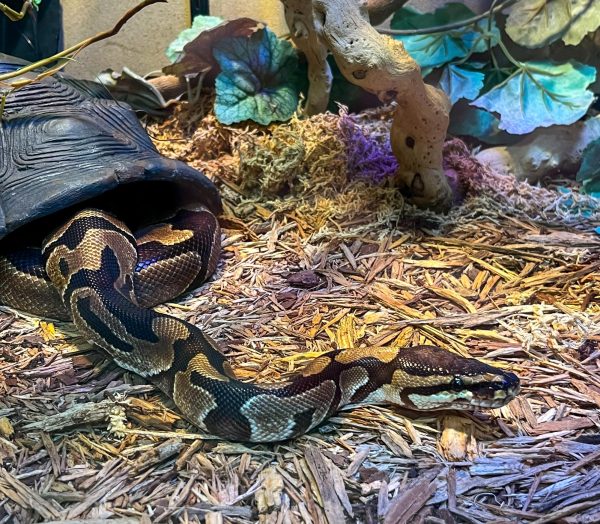
“The real world experience of a real animal in front of you is such a different thing than looking at something in a book or on a screen. You can’t make up for that experience of actually holding or seeing it move or feeling it move,” Rhyne said.
When the snakes aren’t being used in class, they laze around their enclosure.
They receive daily welfare checkups and have a feeding log that is upheld by their caretakers. They also have a campus veterinarian who is available to them in case they need it.
Also in the Department of Biology are more creatures from other countries and continents, like Madagascar hissing cockroaches.
These critters are looked after by Todd Jackson, a teaching assistant professor. He’s been studying insects since his graduate school years and currently oversees the entomology lab, where the bugs are used as a “showand-tell” display, Jackson said.
He has given various offspring of the roaches to programs like local Boy Scout troops and early-childhood development teachers.
“It’s a great thing to try to be a spokesperson for a misunderstood group,” Jackson said.
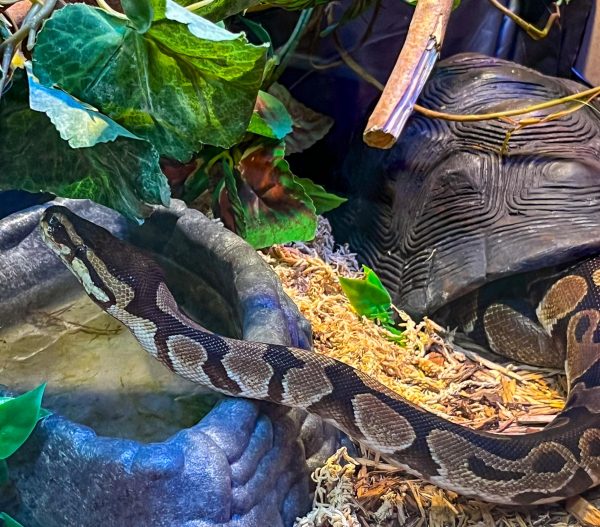
The goal of sharing the bugs is to get people “to not be afraid of them, not be grossed out by them but to have seen them, held them, touch them, have them hiss at them,” Jackson said.
The roaches originally belonged to the Reich College of Education, which was previously using them for a display. It then gave the roaches to Jackson, due to his experience and because he was teaching the entomology lab.
He uses the roaches as a way to relate the class to realworld insect studies and to convince people to not fear insects.
“They’re hissing, six-legged ambassadors,” Jackson said.
Jackson described their care process as “benign neglect,” meaning they do not need to be constantly looked after to thrive. They are fed an omnivorous diet of vegetable and fruit pieces, dried cat food and their favorite, dandelion grass. They drink from a water-soaked sponge since a regular bowl of water would cause them to drown.
“There’s lots out there that 99% of people walking around walk right past, look right at and never see,” Jackson said. “The world around us, the forest and trees, are kind of like a painting, a two dimensional backdrop. But once you start to see what’s alive in there, it becomes 3D.”
